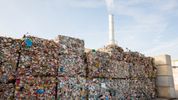Pittsburgh International Airport is showing the world how to turn yesterday’s trash into tomorrow’s treasure—literally. In a bold and inspiring move, the airport has transformed a former landfill into a solar energy powerhouse, adding over 11,000 high-efficiency panels across 12 acres. The result? An additional 4.7 megawatts of clean energy and a serious step forward in sustainability.
What’s even more impressive is that this expansion supports PIT’s already groundbreaking microgrid, which runs entirely on a mix of solar and locally-sourced natural gas. That means the airport is now fully energy independent—no small feat, especially when power reliability is so critical to travel operations.
This isn’t just good news for the airport. By supplying clean power back to the regional grid, PIT is helping local homes and businesses benefit too. It's a smart, scalable solution that reimagines what we can do with underused or contaminated land.
Turning a landfill into a clean energy hub isn’t just a win for Pittsburgh—it’s a blueprint for the future. Hopefully, more cities and airports will follow their lead and start viewing sustainability as an opportunity, not a challenge.
Who would’ve thought an old dump could shine this bright?
Recycling is a difficult industry, as consumers pay little attention to things they throw out, and recycling labor is an unwanted job, even among manual labor positions. In response, Glacier, a 6-year-old startup hoping to tackle the problems with robotic arms and machine learning, has deployed its products to San Diego, Seattle, Chicago, Detroit, and Los Angeles. But more needs to be done, as well over 1 billion tons of trash is created around the world annually.
 unknownx500
unknownx500







/Passle/60211dc9e5416a0c14bc63d4/SearchServiceImages/2025-12-03-19-31-44-490-69309020a71bd983b528ca6c.jpg)








